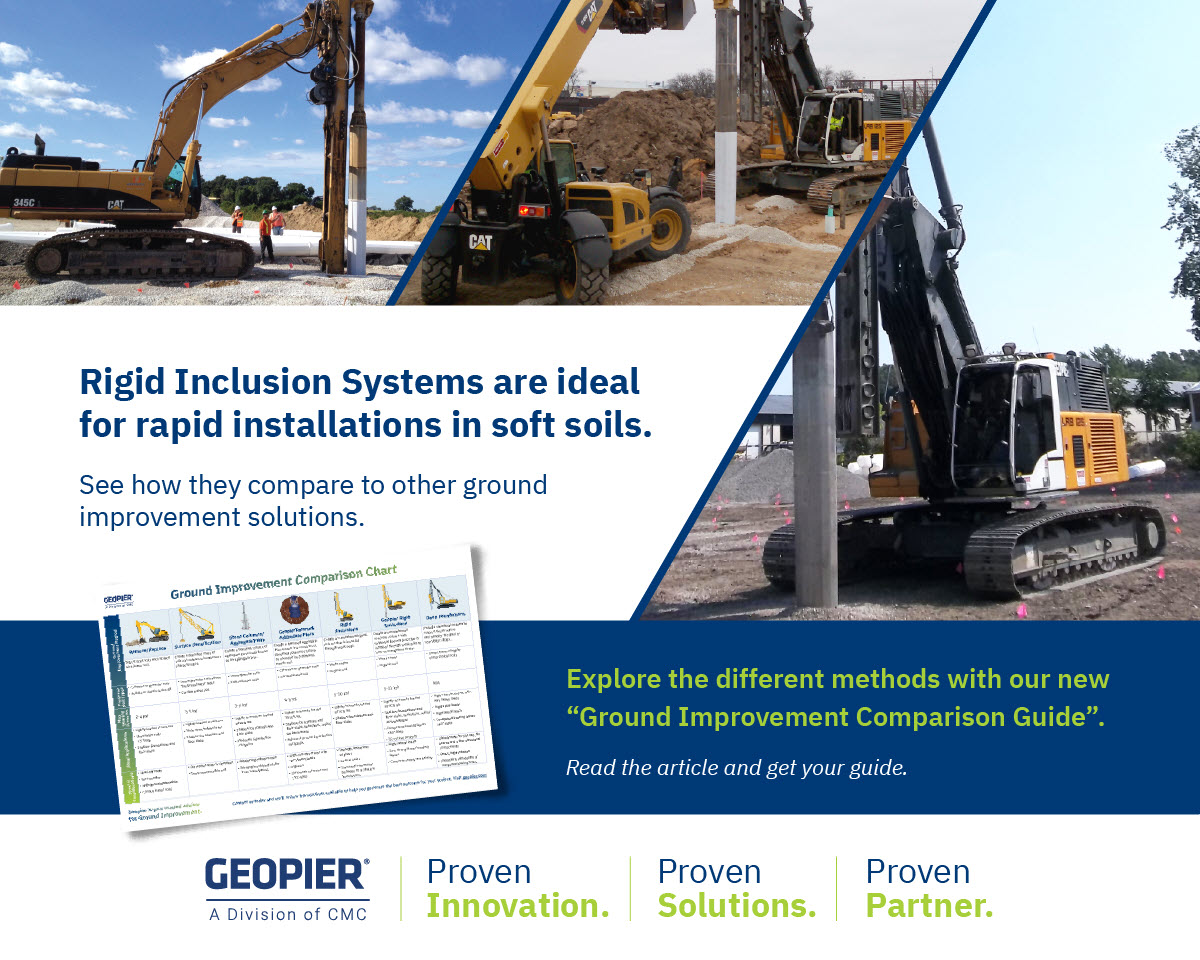
What Are Rigid Inclusions?
Rigid inclusions are ground improvement elements designed to reinforce weak soils and enhance load-bearing capacity for structures. These high-stiffness columns, typically made of concrete or grouted aggregate, transfer structural loads from buildings, bridges, and other infrastructure through compressible soils into stronger, more stable layers below.
By mitigating settlement and increasing bearing capacity, rigid inclusions serve as a critical solution in modern construction. They allow for cost-effective and efficient foundation systems when traditional deep foundations, such as piles, may be overly robust or uneconomical.
What does the Rigid Inclusion selection and design process look like?
1. Site evaluation and soil analysis
Engineers conduct geotechnical investigations to assess subsurface conditions and determine soil strength, settlement potential, and groundwater levels.
2. Selection of the optimal foundation system
Depending on site-specific needs, engineers choose from a variety of foundation solutions, often choosing rigid inclusion systems. It’s important that the engineer matches the rigid inclusion system being considered to the appropriate soil types and maximum allowable bearing capacity required to support the project loads.
3. Installation process
Rigid inclusions are installed by either drilling through or displacing the existing weak soils. Drilling or driving: A hole is created using displacement or auger drilling techniques.
Filling: The hole is filled with unreinforced concrete, cement-treated aggregate, or grouted stone. The cementitious nature of the material prevents bulging of the element into weak soils. This is particularly important for very soft clay and organic soil profiles.
Compaction: In Geopier systems, the material is compacted to maximize stiffness and ensure proper load transfer. Our patented rigid inclusion installation technology creates a compacted column of cemented aggregated and/or an expanded bulb at the bottom of the column to maximize the element’s capacity.
What Are Rigid Inclusions used for?
Rigid Inclusions are ideal for settlement control of structures underlain by thick deposits of compressible soils (organics, soft clays, and loose sands) or even heavy structures on moderate soils in which the heavy loads would induce excess settlements. They are often significantly more cost-effective than deep foundations.
Settlement Control: Prevents excessive movement in structures built on weak or compressible soils.
Heavy Load Support: Ideal for commercial, industrial, residential, and transportation infrastructure requiring high load-bearing capacity.
Differential Settlement Mitigation: For new structures constructed near existing buildings, utilities, or sensitive equipment, rigid inclusions can minimize differential settlement.
Learn more and get a free ground improvement comparison guide.




